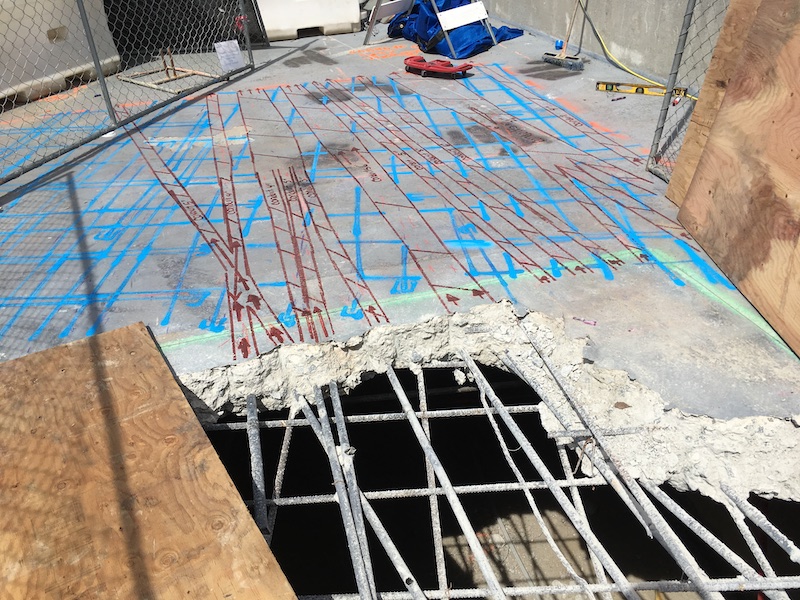Discovering the Depths: A Comprehensive Overview to Concrete Scanning and Its Diverse Applications
In the world of construction and framework advancement, the thorough procedure of concrete scanning holds a critical role in ensuring the architectural integrity and safety and security of jobs. As modern technology proceeds to evolve, the applications of concrete scanning have broadened much beyond simple surface-level analyses.
Relevance of Concrete Scanning
Recognizing the importance of concrete scanning is important in guaranteeing the security and integrity of frameworks during building and renovation jobs. Concrete scanning uses advanced modern technologies such as ground-penetrating radar (GPR) and electro-magnetic induction to discover embedded things, spaces, or various other anomalies within concrete frameworks - RainierGPR Concrete Scanning. By conducting extensive scans before boring, cutting, or coring into concrete, construction teams can prevent unintended damages to important architectural components like rebar, channels, or post-tension cables. This proactive strategy not just prevents expensive repairs and task hold-ups however additionally boosts total building and construction safety by reducing the danger of structural failings or collapses due to endangered honesty.
Additionally, concrete scanning plays a crucial function in ensuring compliance with building ordinance and regulations that mandate the defense of existing architectural elements during construction tasks. By accurately drawing up the internal make-up of concrete, scanning modern technologies allow building and construction specialists to make educated decisions that support the structural stability and toughness of structures and facilities tasks. In significance, the importance of concrete scanning lies in its capability to safeguard both the structural integrity and the personnel involved in building and construction ventures.
Technologies Made Use Of in Concrete Scanning
Concrete scanning relies upon innovative technologies such as ground-penetrating radar (GPR) and electromagnetic induction to accurately identify ingrained things and anomalies within concrete frameworks. Ground-penetrating radar operates by giving off high-frequency electromagnetic waves right into the concrete. When these waves run into various products or voids within the concrete, they jump back to the surface, allowing the GPR system to create an in-depth subsurface photo. This innovation is specifically effective in situating rebar, post-tension wires, conduits, and various other items embedded in concrete.
Electro-magnetic induction, on the other hand, functions by producing electro-magnetic fields around a concrete structure with a transmitter coil. When steel items are present within the concrete, they interfere with these electromagnetic fields, triggering eddy currents to flow with the steel. By measuring the modifications in the electromagnetic fields with a receiver coil, the system can identify the area of metal objects in the concrete.
These sophisticated modern technologies play a critical role in non-destructive screening, guaranteeing the security and stability of concrete frameworks in numerous industries.
Applications in Building And Construction Market
Within the building and construction industry, concrete scanning modern technology discovers varied applications that improve project performance and safety. Furthermore, concrete scanning is used for view it now finding voids, such as air pockets or locations of wear and tear within concrete, which can compromise the overall stamina of a framework. Concrete scanning plays a vital duty in quality control by validating the thickness of concrete covers over support, guaranteeing conformity with style specifications and requirements.

Safety And Security Advantages of Concrete Scanning
In the world of construction safety, the application of concrete scanning innovation offers an extremely important advantage in preemptively determining prospective risks and strengthening architectural integrity. By using innovative scanning techniques such as ground-penetrating radar (GPR) and electro-magnetic induction, building teams can properly locate rebar, post-tension wires, avenues, and other surprise objects within concrete frameworks. This positive approach considerably lowers the threat of accidental strikes during boring, reducing, or coring tasks, thus preventing costly problems, injuries, and job delays.
Furthermore, concrete scanning boosts worker security by providing real-time information regarding the architectural problem of concrete aspects. This information helpful resources allows construction professionals to analyze the stability of existing frameworks, recognize degeneration or flaws, and make notified choices pertaining to repair and upkeep treatments. By addressing potential safety problems immediately, concrete scanning adds to producing a protected working environment and minimizing the likelihood of structural failures or crashes on building and construction websites. Eventually, the security advantages of concrete scanning not only secure lives and possessions however likewise promote sector requirements for quality and reliability.
Future Patterns in Concrete Scanning
Emerging advancements in scanning technology are positioned to reinvent the field of concrete evaluation and evaluation. One major pattern that is getting grip is the assimilation of expert system (AI) and artificial intelligence formulas right into concrete scanning tools. By utilizing the power of AI, these systems can analyze substantial quantities of information collected during scanning procedures to offer even more precise and detailed understandings into the problem of concrete structures. This can help in discovering surprise defects, anticipating possible architectural failures, and also advising upkeep methods.
One more substantial trend is the advancement of even more user-friendly and portable scanning gadgets. Miniaturization of scanning equipment enables for easier access to constrained spaces and remote areas, making assessments more extensive and effective. Furthermore, improvements in cordless interaction technologies allow real-time data transfer and analysis, helping with quicker decision-making procedures.
Moreover, there is an expanding concentrate on sustainability in concrete scanning innovations - RainierGPR Concrete Scanning. Manufacturers are progressively incorporating green products and energy-efficient features right into their devices to minimize ecological impact. These future fads are set to improve the his comment is here efficiency, precision, and sustainability of concrete scanning methods, forming the industry's future landscape
Verdict
Finally, concrete scanning plays a vital duty in the building and construction sector by making certain the safety and performance of different tasks. By making use of sophisticated modern technologies, such as GPR and radar imaging, professionals have the ability to accurately find prospective risks within concrete structures. The applications of concrete scanning are substantial and continue to advance, making it an essential device for keeping the stability of buildings and facilities. As modern technology breakthroughs, the future of concrete scanning holds encouraging advancements for enhancing construction procedures.
